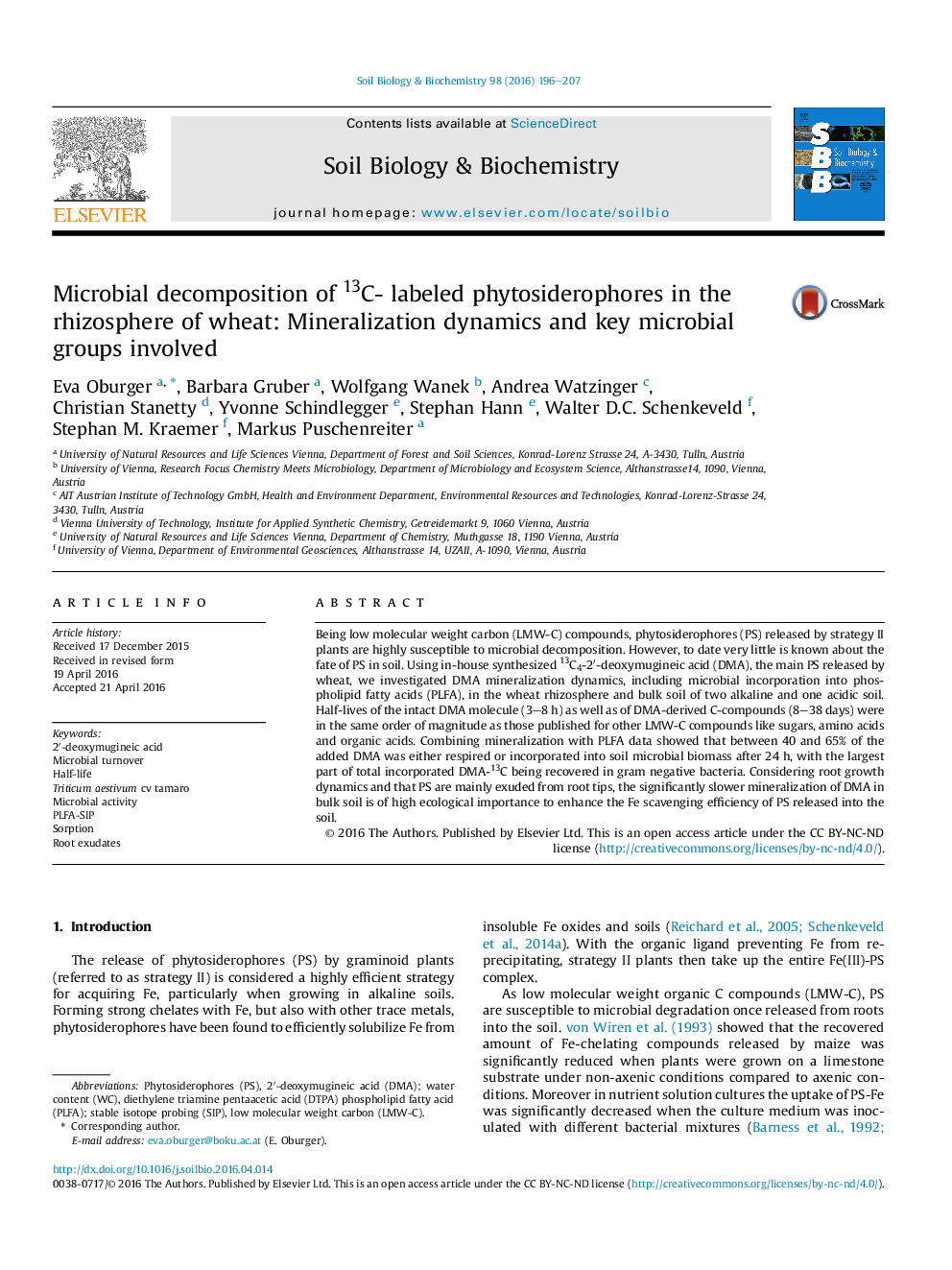| Article ID | Journal | Published Year | Pages | File Type |
|---|---|---|---|---|
| 8363565 | Soil Biology and Biochemistry | 2016 | 12 Pages |
Abstract
Being low molecular weight carbon (LMW-C) compounds, phytosiderophores (PS) released by strategy II plants are highly susceptible to microbial decomposition. However, to date very little is known about the fate of PS in soil. Using in-house synthesized 13C4-2â²-deoxymugineic acid (DMA), the main PS released by wheat, we investigated DMA mineralization dynamics, including microbial incorporation into phospholipid fatty acids (PLFA), in the wheat rhizosphere and bulk soil of two alkaline and one acidic soil. Half-lives of the intact DMA molecule (3-8Â h) as well as of DMA-derived C-compounds (8-38 days) were in the same order of magnitude as those published for other LMW-C compounds like sugars, amino acids and organic acids. Combining mineralization with PLFA data showed that between 40 and 65% of the added DMA was either respired or incorporated into soil microbial biomass after 24Â h, with the largest part of total incorporated DMA-13C being recovered in gram negative bacteria. Considering root growth dynamics and that PS are mainly exuded from root tips, the significantly slower mineralization of DMA in bulk soil is of high ecological importance to enhance the Fe scavenging efficiency of PS released into the soil.
Related Topics
Life Sciences
Agricultural and Biological Sciences
Soil Science
Authors
Eva Oburger, Barbara Gruber, Wolfgang Wanek, Andrea Watzinger, Christian Stanetty, Yvonne Schindlegger, Stephan Hann, Walter D.C. Schenkeveld, Stephan M. Kraemer, Markus Puschenreiter,
